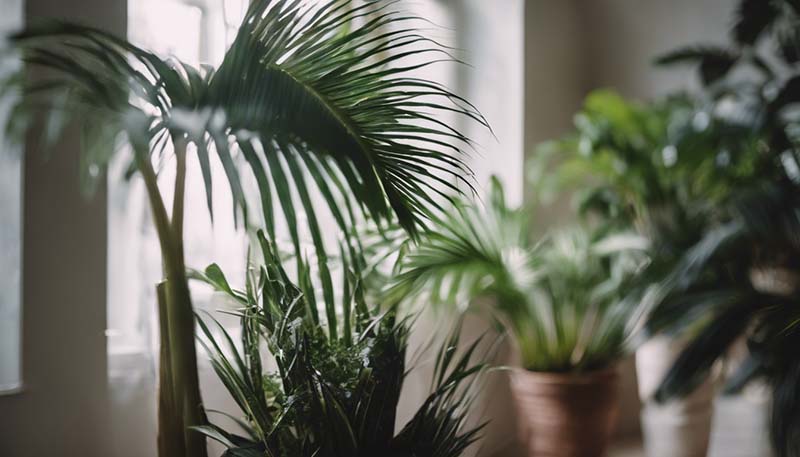Indoor Gardening: How to Care for Indoor Palms
Palm trees are a tropical delight that can bring a touch of the exotic to your indoor space. They are not only visually appealing but also help improve air quality. However, to keep your indoor palms healthy and thriving, you need to understand their specific care requirements.
Understanding Your Palm's Needs
Palm trees are a diverse group of plants with varying needs. Before you bring one home, research the specific species to understand its light, water, temperature, and humidity preferences.
Light Requirements
Most palms prefer bright, indirect light. However, some species can tolerate lower light conditions. Make sure to place your palm where it can get the right amount of light for its species.
Advertisement
Watering Guidelines
Overwatering is a common issue with indoor palms. It's important to water your palm only when the top inch of soil feels dry to the touch. The frequency will depend on the size of the plant, the environment, and the season.
Temperature and Humidity
Palm trees are tropical plants and prefer warmer temperatures. They also thrive in higher humidity. Use a humidifier or place a tray of water near the plant to increase humidity levels if needed.
Soil and Potting
Choose a well-draining soil mix and a pot with drainage holes to prevent root rot. A terra cotta pot can be beneficial as it allows the soil to dry out more quickly.
Fertilizing Indoor Palms
Palm trees need a balanced fertilizer to support their growth. Apply a slow-release fertilizer or a liquid fertilizer diluted to half strength every 4-6 weeks during the growing season.
Common Palm Tree Species for Indoors
Here are some popular indoor palm species and their specific care tips:
1. Areca Palm (Dypsis lutescens)
The Areca Palm is one of the most popular indoor palms due to its feather-like fronds. It prefers bright, indirect light and regular watering.
2. Parlor Palm (Chamaedorea elegans)
The Parlor Palm is a smaller species that can tolerate lower light levels. It has a compact growth habit and requires less frequent watering.
3. Majesty Palm (Ravenea rivularis)
The Majesty Palm is a robust species that can grow quite tall. It needs plenty of light and regular watering, but be careful not to overwater.

4. Bamboo Palm (Chamaedorea seifrizii)
The Bamboo Palm, also known as the reed palm, has a unique, bamboo-like appearance. It prefers bright light and high humidity.
Pruning and Cleaning Indoor Palms
Regular pruning and cleaning can help maintain the health and appearance of your indoor palms. Remove dead or yellowing leaves and trim any unwanted growth.
Dealing with Pests and Diseases
Indoor palms can occasionally suffer from pests like spider mites and diseases like root rot. Regular inspection and prompt action can prevent serious issues.
Conclusion
Caring for indoor palms can be a rewarding experience. With the right care, these tropical plants can thrive indoors, adding a touch of the outdoors to your living space.
Remember to always tailor your care routine to the specific needs of your palm species and adjust as needed based on the feedback your plant provides through its growth and health.
Comment